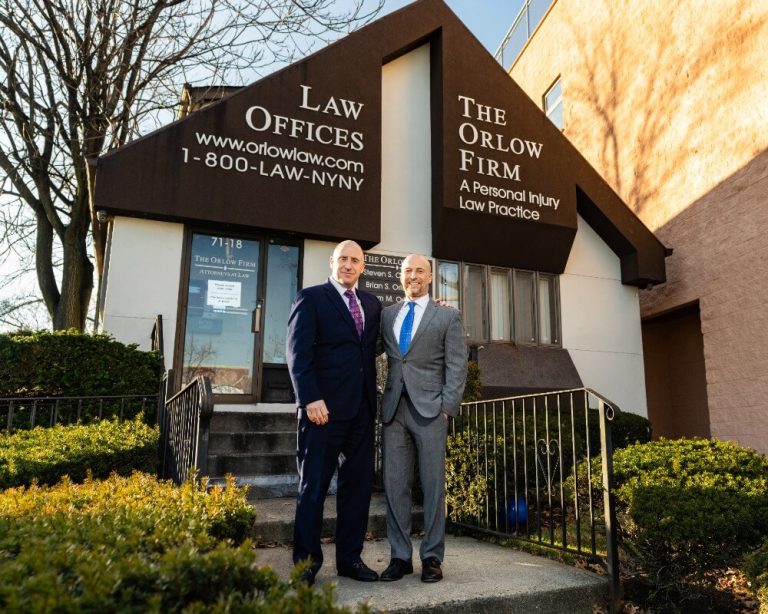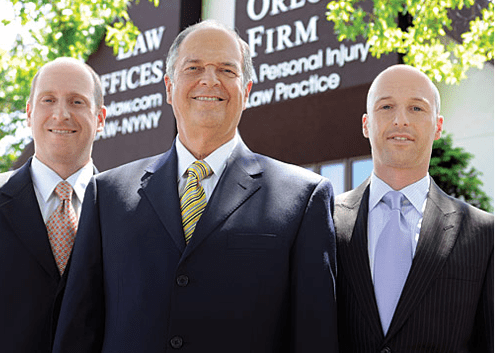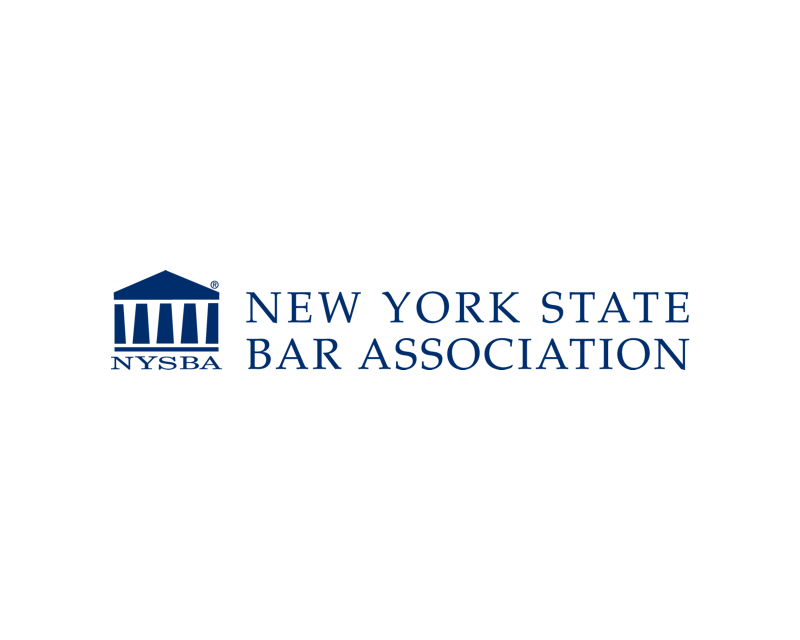The Following People Contributed to This Page
Cindy Cordova is a seasoned legal writer with over seven years of experience crafting clear, informative, and professional content for law firm websites. With a B.A. in English from Trinity Christian College, she combines her strong writing background with a deep understanding of legal topics to help firms connect with their clients through trustworthy and accessible content.
- June 10, 2025
What Does “Standard of Care” Mean in Personal Injury Cases?
Quick Answer: The standard of care in personal injury law means how a reasonably careful person would act in the same situation. In New York, it’s judged by what is normal or expected behavior for someone in that role, like a driver, doctor, or business owner. If you’ve been injured and believe someone didn’t act responsibly, call The Orlow Firm at (646) 647-3398 for a free consultation to discuss your options.
Standard of Care: An Overview
In personal injury law, the standard of care refers to the level of caution or attention that a reasonable person would use in a similar situation. This concept helps decide if someone was legally careless, or negligent, when an injury occurred.
To win a personal injury case in New York City, the person who was hurt must show that someone failed to meet the standard of care and that failure caused the injury. The standard of care depends on many factors, including what the person was doing, where it happened, and what a typical person would have done to avoid harm.
For example, imagine a grocery store in the Bronx. If a spill stays on the floor for hours and someone slips on it, the store may have failed to meet the standard of care. A reasonable store owner would have cleaned up the spill or put up a warning sign.
In legal terms, the standard of care is often used to answer this question: Did the person or business act the way a reasonable person would have under similar circumstances? If the answer is no, they may be found negligent.
Here are a few more examples:
- Drivers must follow traffic laws and drive safely. Speeding in heavy Queens traffic could break the standard of care.
- Doctors must treat patients using accepted medical practices. A mistake that another trained doctor wouldn’t make could be a breach of care.
- Employers must keep workplaces safe. For example, on a construction site in Manhattan, they must provide proper safety gear to workers. If they don’t, an injured worker may need help from a NYC construction accident lawyer.
The standard of care is the foundation of most personal injury claims. Once it’s set, lawyers and courts look at actions and decide if that standard was met. If it wasn’t, the injured person may have the right to seek compensation.
Understanding how the standard of care applies to your case can be complex, especially in a busy city like New York. If you’ve been injured and believe someone didn’t act responsibly, call The Orlow Firm at (646) 647-3398 for a free consultation to discuss your options.
How Is the Standard of Care Determined in New York?
In New York personal injury cases, the standard of care is a legal guideline that helps decide whether someone acted in a reasonably safe and responsible way. Determining this standard depends on the type of situation and what a reasonable person would do under the same or similar circumstances.
Here’s how the standard of care is generally determined in New York:
- Reasonable Person Test: Courts often ask, “What would a reasonably careful person have done in this situation?” If the person being sued failed to act like a reasonable person, they may have breached the standard of care.
- Industry or Professional Standards: In cases involving professionals—like doctors, nurses, or building inspectors—the court looks at how other trained professionals in that field would normally act. For example, a doctor in New York City is held to the standards expected of other doctors in the area with similar training.
- Laws and Safety Rules: If a person or company broke a law or regulation meant to protect safety—like building codes or traffic laws—the court may use that as proof they failed to meet the standard of care.
- Special Factors: Sometimes, the standard of care changes based on who was involved. For example, businesses owe a higher duty of care to customers. A landlord must keep a property in safe condition for tenants and visitors. A school has a special duty to protect students.
Let’s look at an example in New York City. A store owner in Brooklyn must clean up spills quickly to protect shoppers from slipping. If someone falls and gets hurt because the spill was left for too long, the owner may have failed to meet the standard of care.
The facts of each case matter. Weather, time of day, location, and other details are all considered when a court decides what the appropriate standard of care was and whether it was followed.
If you or a loved one was injured in NYC due to someone’s unsafe actions, understanding how the standard of care applies to your case is important. For guidance about your specific situation, contact The Orlow Firm at (646) 647-3398 for a free, private consultation.
Why Is the Standard of Care Important in Personal Injury Lawsuits?
The standard of care plays a vital role in personal injury lawsuits because it helps decide who is legally responsible for an injury. When someone is hurt due to another person’s actions—or failure to act—the court looks at whether the responsible party acted with reasonable care. If they did not, and someone was harmed because of it, they may be held legally accountable.
In simple terms, the standard of care is what a “reasonable person” would do in the same situation. It sets the basic level of caution, skill, or attention that someone must use to avoid harming others. In New York City personal injury cases, this idea is key to showing who was at fault.
Here are some reasons why the standard of care matters in a personal injury lawsuit:
- Helps establish fault: If someone failed to meet the expected level of care and caused harm, they can be found negligent. This is the first step in building a personal injury claim.
- Connects action to injury: Once a breach in the standard of care is proven, the injured person must show that this breach directly caused their injury. This link, known as “causation,” is critical to the case.
- Guides the outcome: Whether it’s a slip and fall in a NYC grocery store or a medical mistake in a Bronx hospital, proving that someone failed to meet the standard of care can lead to financial recovery for the victim.
For example, a property owner in New York City has a legal duty to regularly check and fix hazards like icy sidewalks or broken stairs. If they fail to do so and someone gets hurt, the court may find that they failed to meet their standard of care.
Similarly, a driver in Queens who texts while driving is not acting like a careful driver would. If they cause a crash, it’s likely they violated the standard of care expected of all drivers—and may be held liable for any injuries.
In every personal injury case, the standard of care serves as a measuring stick. It helps judges, juries, and attorneys evaluate actions and decide whether or not they were reasonable under the circumstances. When arguing a case, injury lawyers often rely on the standard of care to show how someone’s actions—or inaction—led to harm that could have been prevented.
If you or a loved one suffered an injury that you believe was caused by someone else’s carelessness in New York City, understanding how the standard of care works is a key step in protecting your rights. To learn more or discuss your case, contact The Orlow Firm at (646) 647-3398 for a free consultation.
What Happens When the Standard of Care Is Not Met?
When the standard of care is not met, it means someone acted in a careless or unsafe way that caused harm to another person. In personal injury law, this is often called a “breach of duty.” The person or group that failed to meet the standard may be held legally responsible for the victim’s injuries.
In New York City, when someone does not meet the standard of care, it can lead to a personal injury lawsuit. This applies to many situations, such as car accidents, slip and fall cases, medical malpractice, and construction accidents. Each type of case has its own rules, but the core idea is the same: people must act with care to prevent harm to others.
If a person or organization fails to meet that level of care, here’s what can happen:
- The injured person may file a lawsuit to seek compensation, also known as damages.
- The court looks at what a “reasonable” person or professional would have done in the same situation. If the defendant’s actions fell below that standard, they may be found negligent.
- The victim must also show that the breach caused their injury . It’s not enough to prove the defendant was careless—they must also have caused the harm.
The types of damages a person may seek include:
- Medical costs : Money spent on treating the injury, from hospital visits to physical therapy.
- Lost wages : Pay that the injured person missed while they were unable to work.
- Pain and suffering : The physical and emotional distress caused by the injury.
For example, if a property owner in the Bronx fails to fix a broken stair rail and someone falls, that could be a breach of the standard of care. If the fall caused serious injury, the injured person may have the right to sue for compensation.
Not every accident is a result of someone failing to meet the standard of care. That’s why these cases are often complex. Proving that someone was legally at fault requires strong evidence and careful legal work.
If you believe someone else’s carelessness caused your injury in New York City, you may have legal options. Contact The Orlow Firm at (646) 647-3398 to learn about your rights and speak with a personal injury attorney.
How Does the Standard of Care Vary by Situation or Profession?
The standard of care is not the same in every case. It changes based on the situation or the profession involved. New York courts look at what a “reasonably careful” person or professional would have done under similar circumstances. This means the standard depends on who was involved and what was expected of them in the setting where the incident happened.
Here are a few examples to show how the standard of care can vary:
- Doctors and medical staff: In a hospital, doctors are expected to provide care that meets accepted medical practices. If a surgeon operates on the wrong part of the body, that may be a clear failure to meet the standard of care.
- Property owners: In New York City, a store owner must keep floors clean and dry to avoid slip and fall accidents. If water is left on the floor for hours, and someone slips, the owner may have failed to meet their duty.
- Bus and taxi drivers: Professional drivers must follow traffic laws and drive safely. If a driver speeds through red lights or texts while driving, they may be held to a higher standard than an ordinary driver.
- Construction managers: Supervisors on a construction site must follow all safety rules and ensure workers have proper equipment. If someone is injured due to missing safety gear, the site manager may be held responsible.
- Teachers or school staff: In schools, staff must act responsibly to keep students safe. If a child is seriously hurt because teachers ignored repeated signs of bullying, that could be a breach of their duty of care.
As these examples show, the standard of care depends on the type of work or role a person holds. In personal injury cases, courts ask whether the person acted the way someone in that role should have, given the facts. This is true across New York, including right here in New York City.
If you’re unsure whether someone met the proper standard of care in your case, it may help to speak with a personal injury lawyer. To discuss your specific situation, call The Orlow Firm at (646) 647-3398 for a free consultation.
Can You Sue If Someone Failed to Meet the Standard of Care in NYC?
Yes, you can sue someone in New York City if they failed to meet the standard of care and you were injured as a result. But there are a few important things to understand about how the law works in these cases.
In personal injury law, the standard of care is the level of caution or attention that a reasonable person would use in a similar situation. If someone falls short of this standard and causes harm, it may count as negligence. Negligence is the legal reason many personal injury lawsuits are filed.
To sue someone for failing to meet the standard of care in NYC, you’ll need to show these four things:
- A Duty of Care Existed: The person or party had a legal responsibility to act carefully. For example, drivers must follow traffic laws to keep others safe.
- They Breached the Duty: The person didn’t act the way a reasonable person would have in the same situation. This breach is the failure to meet the standard of care.
- The Breach Caused Harm: You must show a direct link between their actions and your injury. It’s not enough that they acted carelessly; their carelessness must have caused your harm.
- You Suffered Damages: You need to show that you experienced harm, such as medical bills, lost wages, or pain and suffering.
Here are a few examples of when you might be able to sue in NYC:
- Slip and fall accidents: A store fails to clean up a spill, and you fall and break a bone.
- Car crashes: A distracted driver runs a red light and hits your vehicle.
- Medical malpractice: A doctor makes a serious mistake during surgery that causes lasting harm.
- Property-related injuries: A landlord doesn’t fix a broken stairway, and a tenant is hurt because of it.
In each of these cases, the injured person may be able to sue if they can prove the other party didn’t live up to their duty to act safely.
It’s also important to act quickly. New York has time limits for filing personal injury lawsuits. This is known as the statute of limitations. In most personal injury cases, you have three years from the date of the injury to file a claim. But some cases, like those involving government agencies, may have shorter deadlines.
If you believe someone failed to meet the standard of care and it caused your injury, you may have a legal right to seek compensation. A personal injury attorney can review the details of your situation and help you understand your options.
To speak with a New York City personal injury attorney, contact The Orlow Firm at (646) 647-3398 for a free consultation.
What Evidence Is Used to Prove a Breach of Standard of Care?
To prove someone breached the standard of care in a personal injury case, you need strong and clear evidence. This evidence shows that the other person acted in a way that a reasonably careful person would not. In New York City personal injury cases, this is a key part of proving negligence and holding someone legally responsible for your injuries.
Here are the most common types of evidence used to prove a breach of the standard of care:
- Witness Statements: People who saw the accident or injury happen can explain what they saw. Their testimony can help show what the responsible person did or failed to do.
- Photos and Videos: Pictures and videos from the scene can support your version of what happened. In NYC, many places have security cameras, traffic cameras, or even bystanders who recorded video.
- Expert Testimony: Experts can explain what a “reasonable person” in a similar position should have done. For example, a medical expert might describe how a doctor should have treated a patient. For a slip and fall, a safety expert might explain building codes or proper maintenance practices.
- Official Reports: Police reports, medical records, or workplace incident reports can be used as reliable sources of information. These documents help show the injuries and what roles different people played in the event.
- Company Policies or Laws: Written policies, industry rules, or city safety codes help explain the standard of care. If someone breaks these rules, it may show they acted carelessly.
- Scene Inspections: Visiting the location of the accident—like a broken sidewalk or unsafe stairwell—can help collect facts and show how dangerous conditions caused the injury.
For example, say a pedestrian in the Bronx was hit by a delivery truck in a crosswalk. An attorney might collect traffic camera footage, 911 call logs, and expert opinions on how a careful driver should act near crosswalks. These pieces of evidence together could show the driver didn’t meet the expected level of care.
Keep in mind, each case is unique. The type of evidence needed can vary depending on the situation and who was involved.
If you were injured in New York City and believe someone failed to meet the standard of care, it’s important to gather evidence quickly. For help understanding your rights and collecting the right proof, call The Orlow Firm at (646) 647-3398 for a free consultation.
Who Decides Whether the Standard of Care Was Breached?
In a personal injury case, it’s up to the court or jury to decide if the standard of care was breached. This decision often depends on the facts of the case, expert opinions, and the type of accident involved. In New York City, these matters are handled with careful review during the legal process.
Here’s how it usually works:
- The Judge decides questions of law. This means the judge determines what the legal standard of care should be in a given case. For example, in a slip and fall at a grocery store, the judge may decide the store had a duty to clean spills within a reasonable time.
- The Jury decides the facts. If a jury trial is held, jurors will decide whether the person or business failed to meet the standard of care set by the judge.
To help the jury decide, each side may bring in expert witnesses. These are professionals who explain what a “reasonable” person in that role should have done. For instance:
- In a medical malpractice case , a doctor might testify about what steps another doctor should have taken under the same conditions.
- In a car accident case , a traffic expert might explain whether a driver’s actions were unsafe under New York City traffic laws.
The jury then compares what happened in the case to what should have happened. If the person or company acted carelessly and failed to meet the expected standard, that’s called a “breach of duty.”
This step is critical in a personal injury claim. Without proving a breach of standard of care, there’s usually no liability.
If you’ve been hurt and think someone didn’t act safely or reasonably, a personal injury attorney may help gather the right evidence and speak to experts on your behalf. These cases can be especially complicated in New York City, where traffic, regulations, and business standards may vary widely. If you have questions about your situation, contact The Orlow Firm at (646) 647-3398 for a free case evaluation.
FAQ: Standard of Care in New York Personal Injury Cases
- What is the “standard of care” in a personal injury case? The standard of care is the level of caution or attention a person must use to avoid hurting others. In personal injury cases, you must show that someone did not meet this standard and that their actions caused your injury.
- Who decides what the standard of care should be? A judge or jury usually decides this, based on what a “reasonable person” would do in the same situation. In some cases, experts—like doctors or safety professionals—may explain what the standard should be and whether it was followed.
- Does the standard of care change depending on who is involved? Yes. It depends on the situation and the people involved. For example:
- Drivers must follow traffic laws and drive safely.
- Doctors must provide care that other doctors would find acceptable in the same field.
- Property owners must keep their property safe for visitors.
- How can I tell if someone failed to meet the standard of care? You may notice careless actions like texting while driving, not fixing a broken stair, or ignoring safety rules. A lawyer can help gather evidence and may work with experts to show that the person failed to act safely.
- Do I need proof if I think someone didn’t meet the standard of care? Yes. To have a strong case, you need evidence such as:
- Photos or videos of the scene
- Medical records
- Witness statements
- Expert opinions
- Does New York City have its own rules for standard of care? The basic idea is the same across New York State, but NYC has extra safety rules, especially in areas like construction, building codes, and traffic. Local laws and city conditions may help show what the standard of care is in a case.
- What if more than one person may have failed to meet the standard? New York uses a rule called “comparative negligence.” This means more than one person can share blame. If you were partly at fault, you can still recover money, but your amount may be reduced based on your share of the blame.
- Can I still sue if the person who hurt me made a mistake but didn’t mean to? Yes. A person doesn’t have to mean to hurt you to be held responsible. If they were careless or didn’t act the way a reasonable person would, you may still have a case.
- Is it hard to prove a breach of the standard of care? It can be, depending on the case. That’s why gathering strong evidence and working with the right legal team is important. A lawyer can help track down the facts and explain them clearly to the court.
If you’re unsure whether someone failed to meet the standard of care in your injury case, speaking to a personal injury attorney may help. Contact The Orlow Firm at (646) 647-3398 for a free and confidential consultation.
Injured in NYC? Contact The Orlow Firm for a Free Consultation

If you’ve been injured in New York City and believe someone failed to meet the expected standard of care, you don’t have to face it alone. At The Orlow Firm, we understand how confusing and stressful personal injury cases can be, especially when they involve serious injuries and legal standards.
The standard of care is a legal term that refers to the level of caution and attention a reasonable person would use in a similar situation. In personal injury cases, this often means showing that someone acted carelessly or failed to act when they should have. That failure can lead to serious harm—whether it’s from a car accident, a slip and fall, or medical mistake.
Our attorneys work with injured individuals and their families throughout New York City, including the Bronx, Brooklyn, Queens, Manhattan, and Staten Island. We focus on understanding your unique situation and helping you build a strong legal claim if the standard of care was not met.
During your free consultation, we can help answer important questions like:
- Was the other person or company legally responsible to keep you safe? For example, did a doctor follow accepted medical guidelines? Did a property owner fix a known hazard?
- Is there enough evidence to show someone violated the standard of care? We can help gather witness statements, expert opinions, and other records.
- What compensation might you be entitled to? This could include medical bills, lost wages, and pain and suffering if someone else’s carelessness led to your injury.
It’s important to act quickly. In New York, personal injury cases are subject to strict timelines. The sooner you reach out, the better we can protect your rights and build your case.
To speak confidentially with one of our personal injury attorneys, call The Orlow Firm today at (646) 647-3398 for a free consultation. We are here to help guide you through the process and answer all your questions—compassionately, clearly, and with your best interests in mind.
The Following People Contributed to This Page
Cindy Cordova is a seasoned legal writer with over seven years of experience crafting clear, informative, and professional content for law firm websites. With a B.A. in English from Trinity Christian College, she combines her strong writing background with a deep understanding of legal topics to help firms connect with their clients through trustworthy and accessible content.










